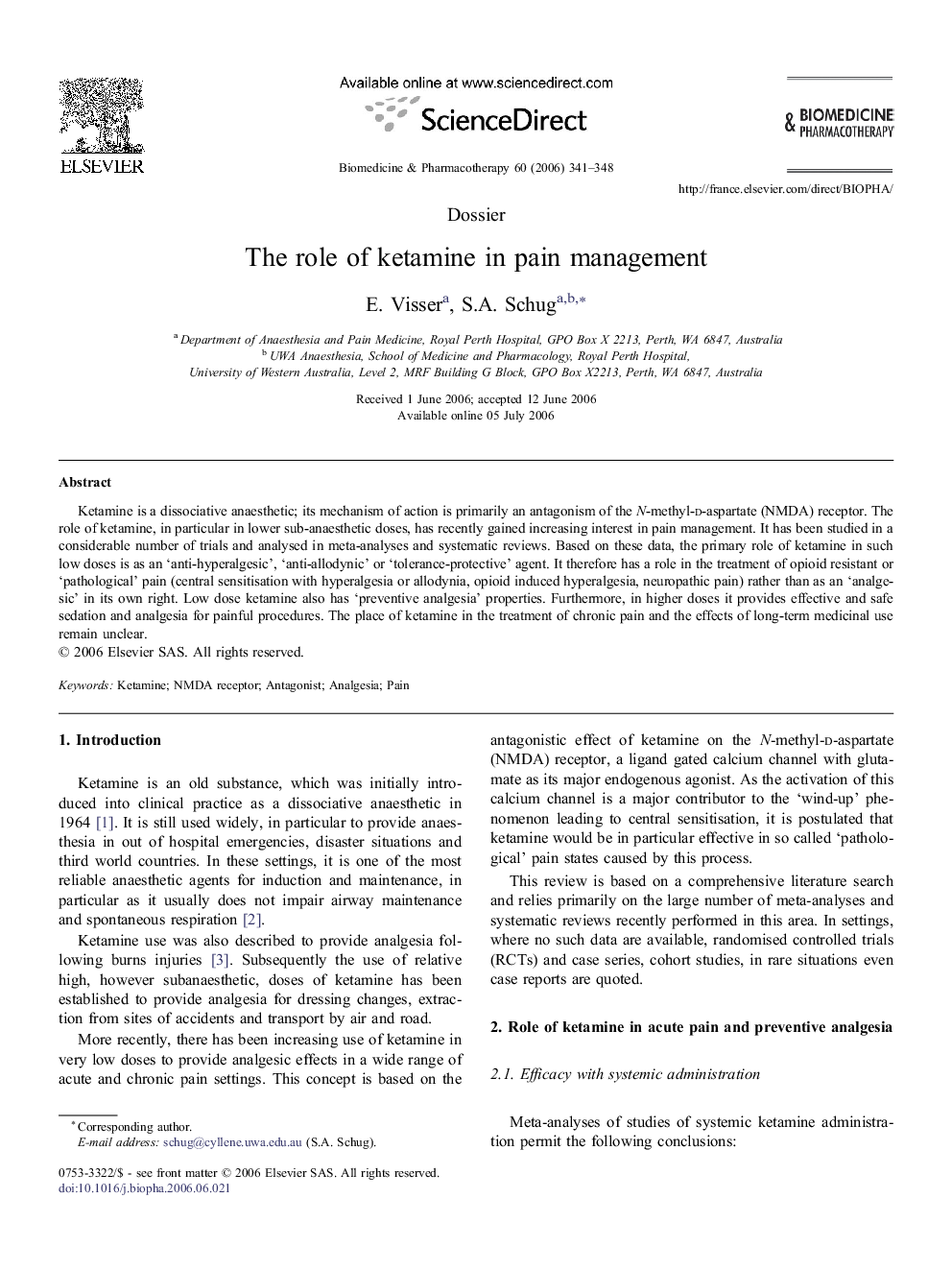| Article ID | Journal | Published Year | Pages | File Type |
|---|---|---|---|---|
| 2526024 | Biomedicine & Pharmacotherapy | 2006 | 8 Pages |
Ketamine is a dissociative anaesthetic; its mechanism of action is primarily an antagonism of the N-methyl-d-aspartate (NMDA) receptor. The role of ketamine, in particular in lower sub-anaesthetic doses, has recently gained increasing interest in pain management. It has been studied in a considerable number of trials and analysed in meta-analyses and systematic reviews. Based on these data, the primary role of ketamine in such low doses is as an ‘anti-hyperalgesic’, ‘anti-allodynic’ or ‘tolerance-protective’ agent. It therefore has a role in the treatment of opioid resistant or ‘pathological’ pain (central sensitisation with hyperalgesia or allodynia, opioid induced hyperalgesia, neuropathic pain) rather than as an ‘analgesic’ in its own right. Low dose ketamine also has ‘preventive analgesia’ properties. Furthermore, in higher doses it provides effective and safe sedation and analgesia for painful procedures. The place of ketamine in the treatment of chronic pain and the effects of long-term medicinal use remain unclear.
